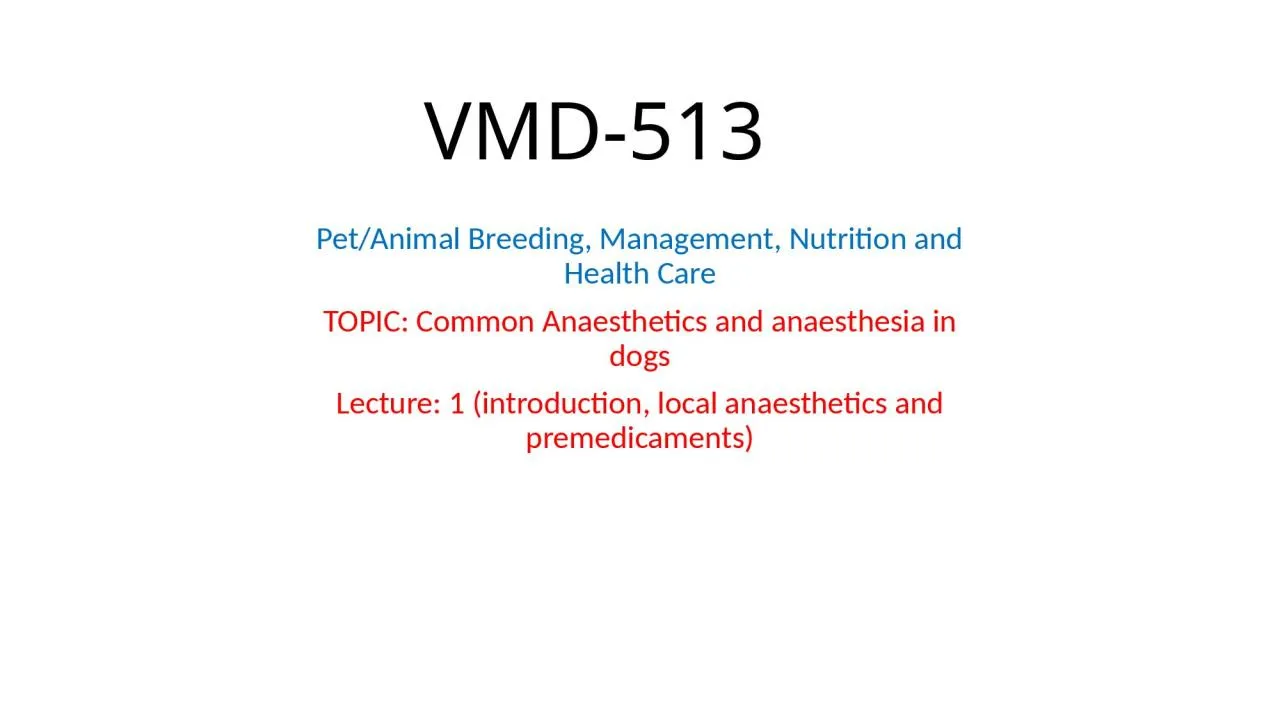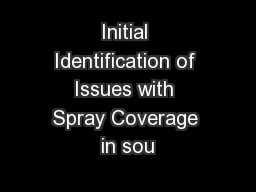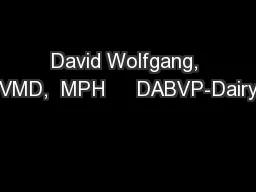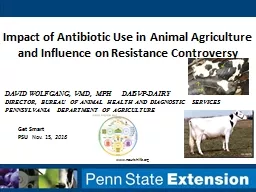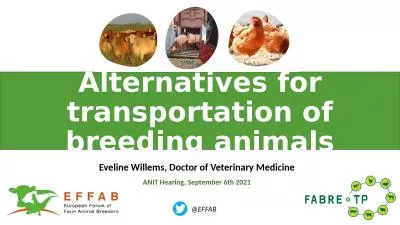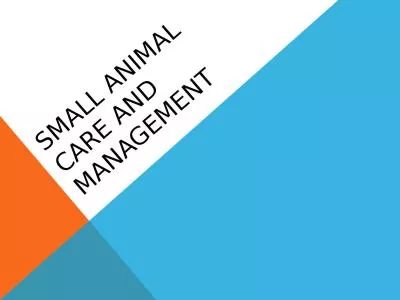PPT-VMD-513 Pet/Animal Breeding, Management, Nutrition and Health Care
Author : ava | Published Date : 2022-06-07
TOPIC Common Anaesthetics and anaesthesia in dogs Lecture 1 introduction local anaesthetics and premedicaments Introduction to anaesthesia There are no safe anaesthetic
Presentation Embed Code
Download Presentation
Download Presentation The PPT/PDF document "VMD-513 Pet/Animal Breeding, Management,..." is the property of its rightful owner. Permission is granted to download and print the materials on this website for personal, non-commercial use only, and to display it on your personal computer provided you do not modify the materials and that you retain all copyright notices contained in the materials. By downloading content from our website, you accept the terms of this agreement.
VMD-513 Pet/Animal Breeding, Management, Nutrition and Health Care: Transcript
Download Rules Of Document
"VMD-513 Pet/Animal Breeding, Management, Nutrition and Health Care"The content belongs to its owner. You may download and print it for personal use, without modification, and keep all copyright notices. By downloading, you agree to these terms.
Related Documents

